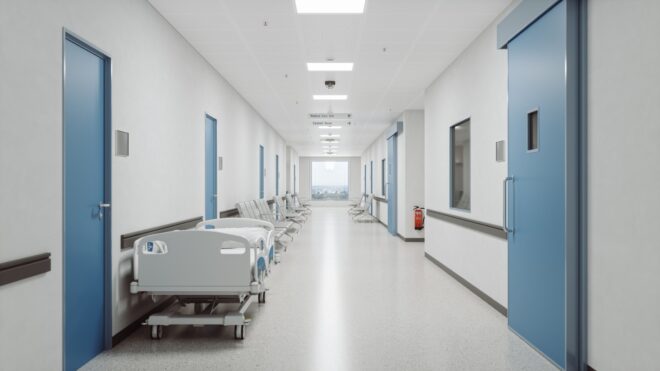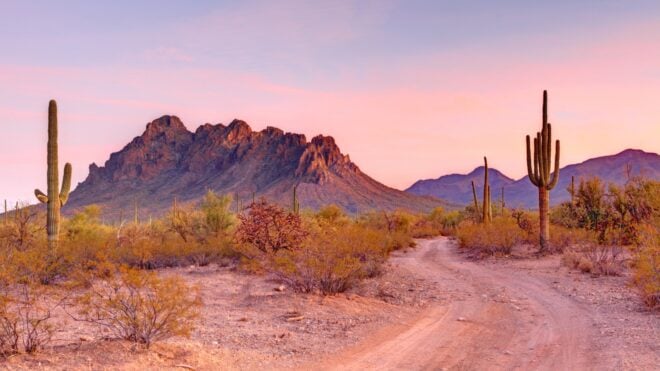It's no secret that access to clean water is a huge problem for millions of people. If you can go to the tap and fill your glass with clean, safe water, consider yourself lucky. Not everyone has this luxury. For many people across the globe, clean drinking water is just not readily available.
Thanks to pollution, droughts, and overcrowding, as well as a lack of facilities to clean and filter the local water, drinking water free of toxins, germs, and pollutants is frighteningly scarce, and in many places, it's getting worse.
So what can be done? Well, as you know, water on this planet exists in a cycle, evaporating into the sky, and coming down again as rain.
The moisture in the air is clean, but humans have to wait for it to fall back to Earth until we can gather it. And in places where it doesn't rain often, that can take a long time!
Luckily, designer Arturo Vittori may have come up with a solution that seems both shockingly simple and totally impossible, kind of like the proposed water bottle made from algae.
Using his talents, he's created the Warka Tower, which pulls water right out of the sky, no rain required.
Check out the design below and see how it just might change lives around the world.
[H/T: My Modern Met]
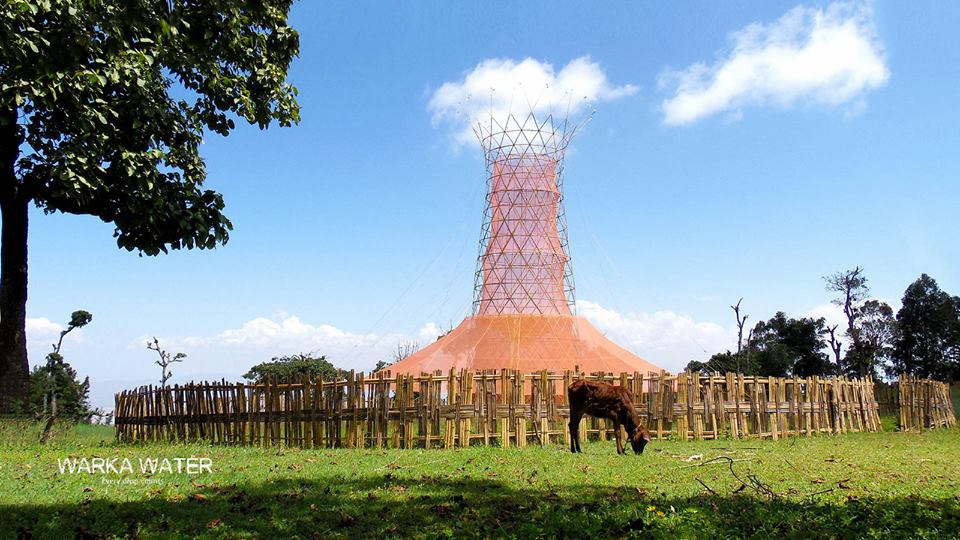
The Warka Tower might not look like much at first, and in reality, it isn't that much, just a bamboo frame, some biodegradable mesh, and a water tank.
But even though it's made of humble components, its potential for impact in areas with chronic water shortages is enormous.
Able to be built on-site in only a few days, the Warka Tower can collect up to 100 liters of water per day, making a huge difference in the lives of locals.
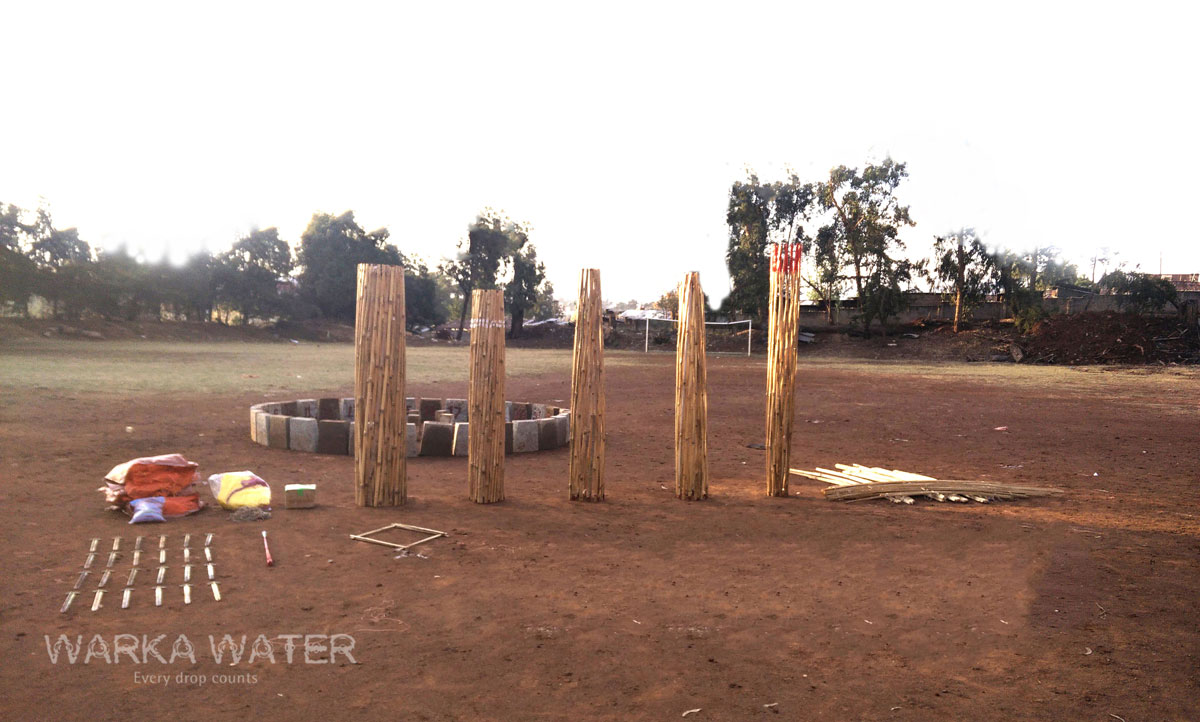
It's also made of simple, all-natural, and biodegradable materials, and it can be constructed by people living in the village using their own tools.
So no special parts, tools, or labor are needed to erect one of these in town.
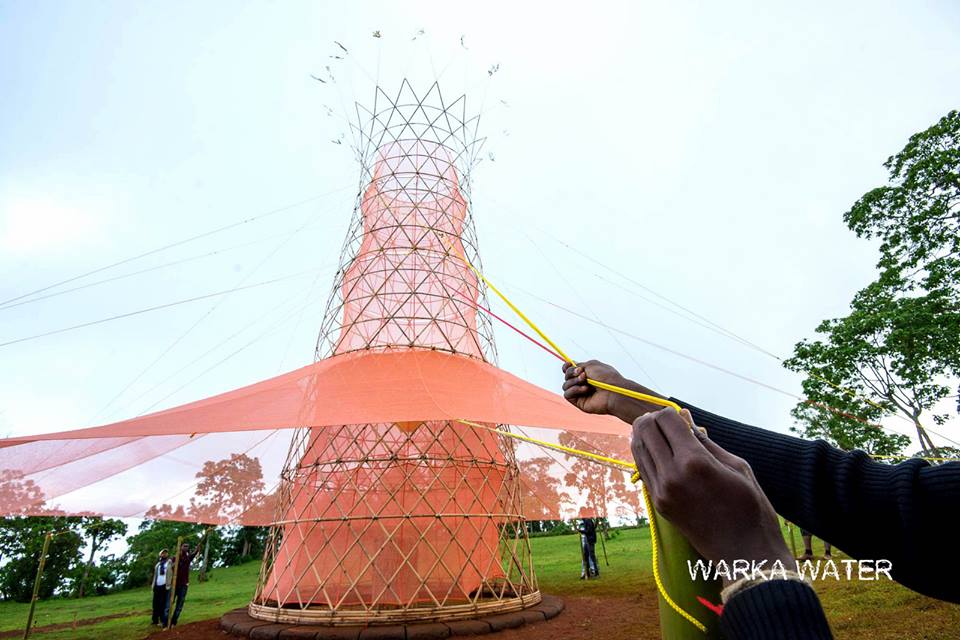
And with some regular care, the towers can last up to 10 years.
The Warka Tower was exhibited at the World Design Impact show in Taipei, which focuses on new ideas from designers about how to positively impact the world and its people.
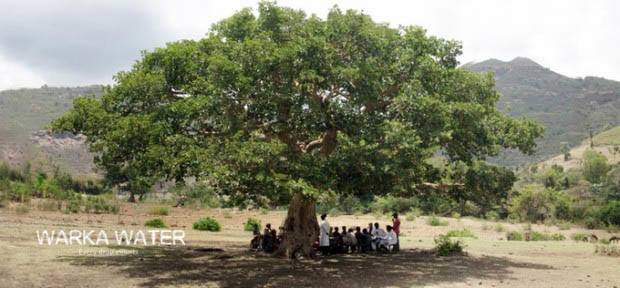
And what does Warka mean?
The name comes from a type of fig tree, native to Ethiopia and important to the culture as symbols of a healthy, vibrant community.
Warka designer Arturo Vittori chose the name based on the tower's tree-like shape and its place as a center for the community.
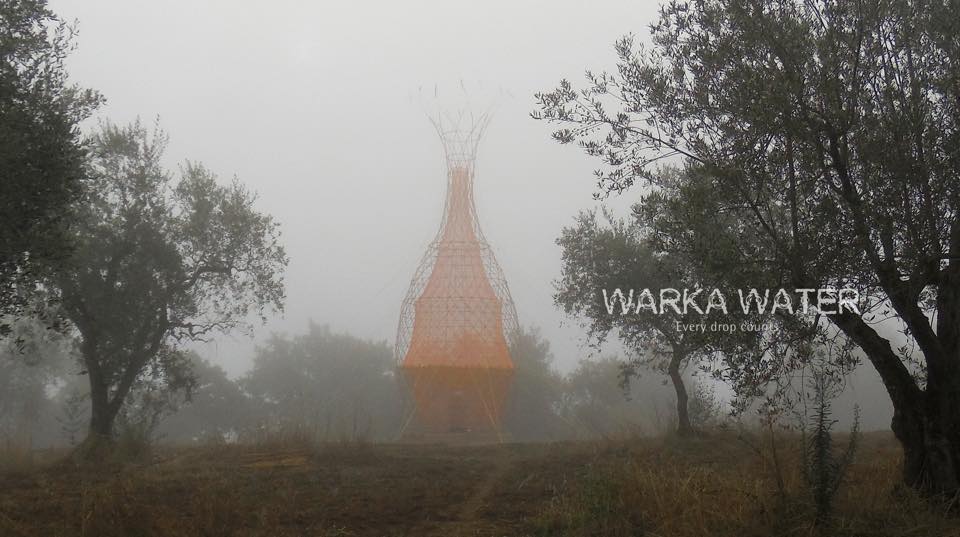
So how does it work?
The Warka Tower uses what's called "fog harvesting," where water droplets from the air are collected and funneled into tanks for consumption.
Fog harvesting has actually been done by people living in arid climates for thousands of years, and it's a perfect way to take advantage of when there's water in the air, but not enough to cause rain.
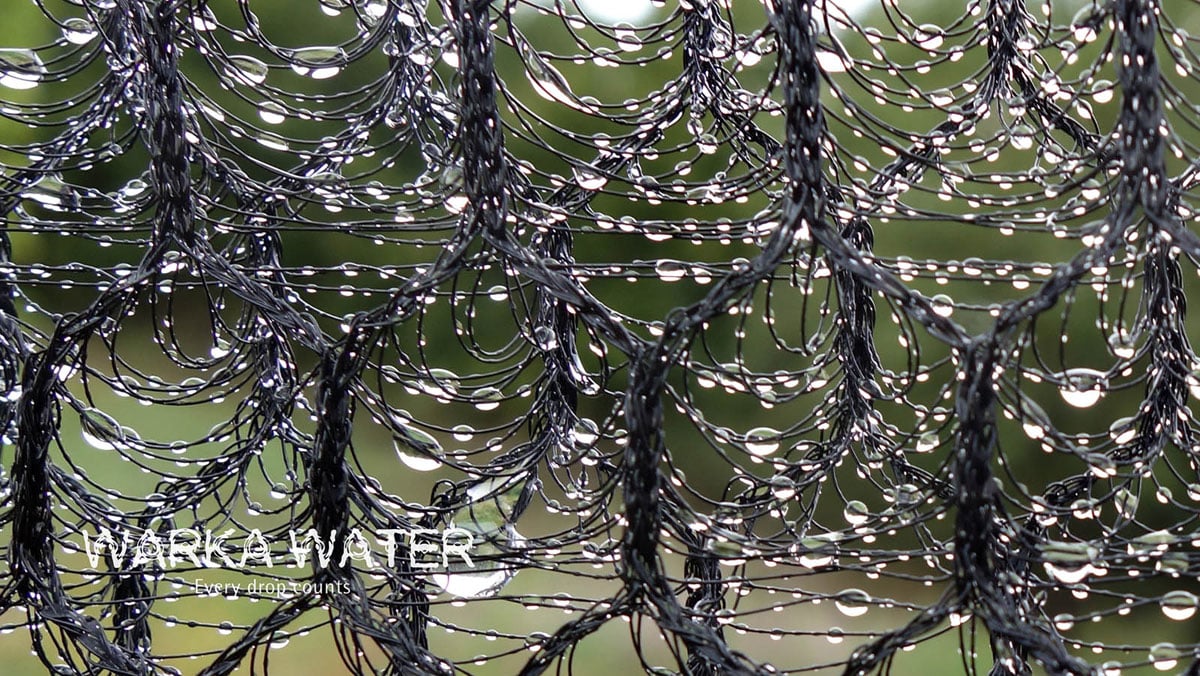
The mesh surrounding the tower is coated with a special, environmentally-safe substance that water sticks to as dew, and then drips off to be collected in the tank.
Vittori was inspired by plants and animals that live in deserts, like cacti and beetles. They have special features that trap and collect fog, allowing them to live in otherwise nearly waterless climates.
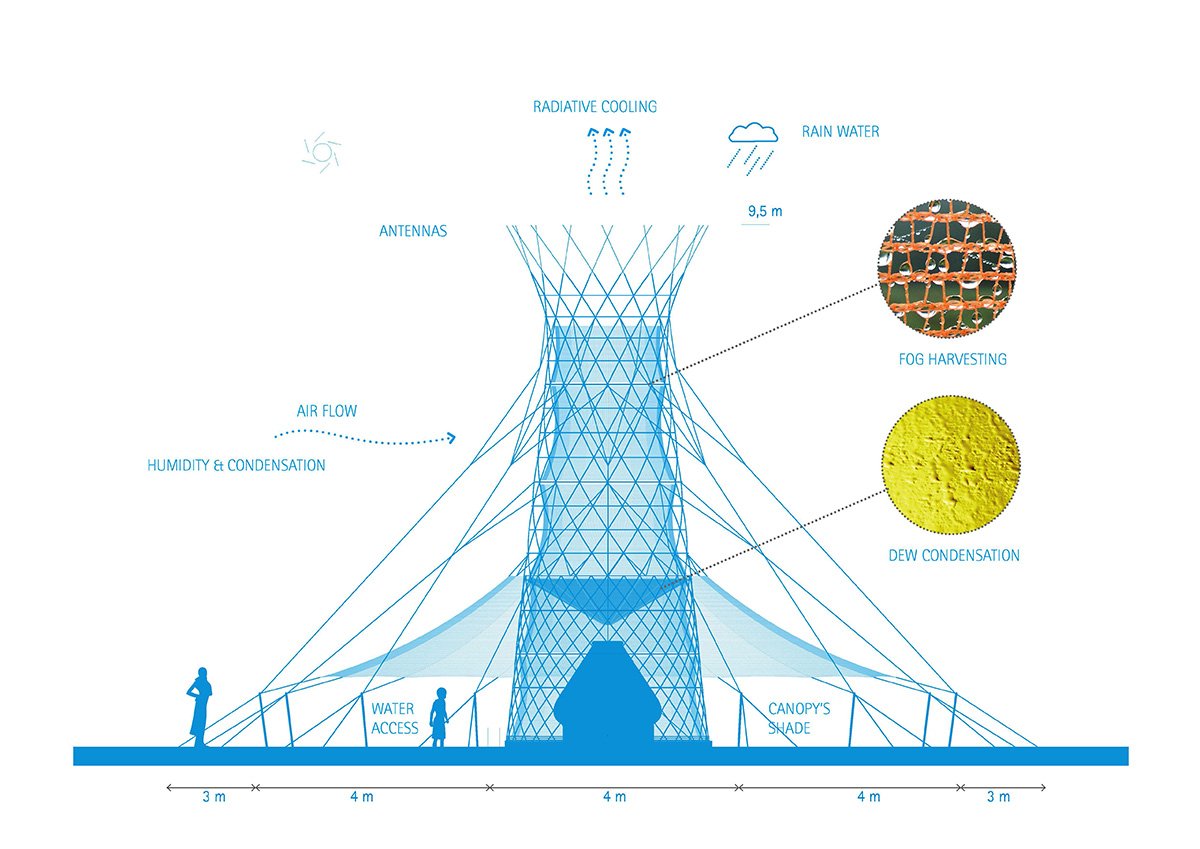
The mesh around the column collects water from the damp air, and then the water drips down into a collection surface, which in turn funnels it into the tank. People can then collect water as they need it.
The towers are also designed to withstand storms and wind. It can also be collapsed quickly in case very severe weather occurs. The bamboo spines at the top also serve to keep birds away.
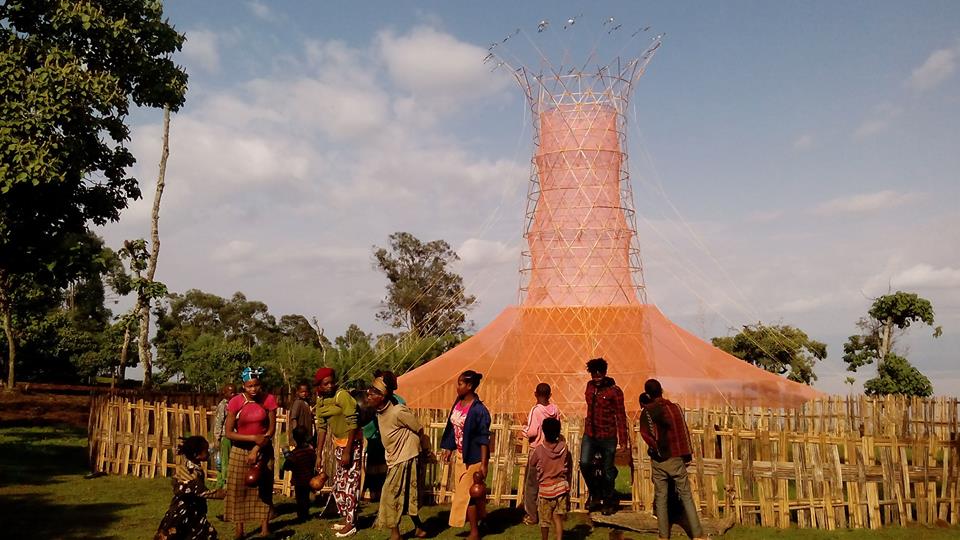
And since the water is coming from the air and not touching the ground, it's completely safe to drink, with the only exceptions being in very heavily polluted areas.
With regular maintenance of the tower, the water will stay clean, too.
Vittori and his team are also developing filtering systems that can be installed for extra-clean water.
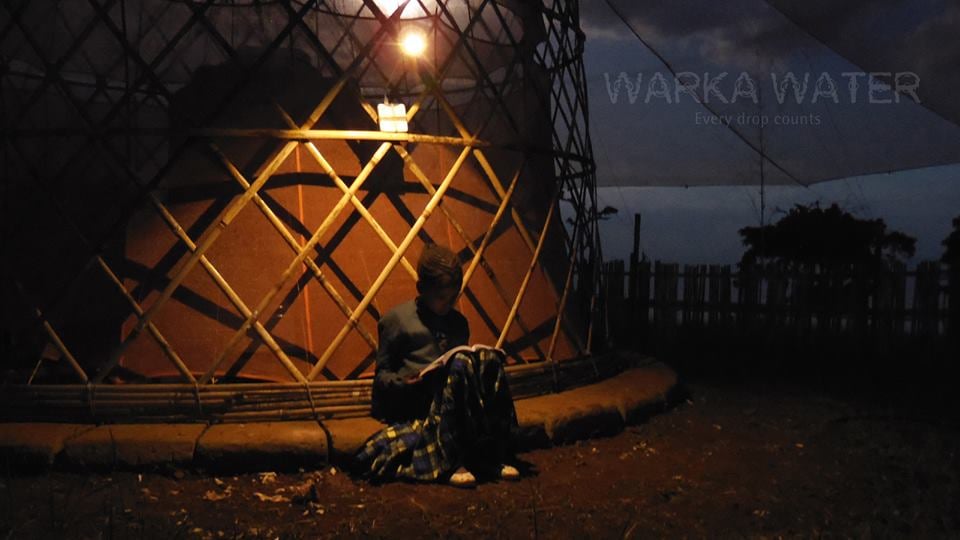
And while clean drinking water is the main goal, having a tower like this also means improvements in other areas. For example, fetching water from pumps is usually the job of girls.
Because the pumps are so far away, the girls don't have time to go to school.
A Warka tower brings the water to them, meaning they can spend their time in school and studying.
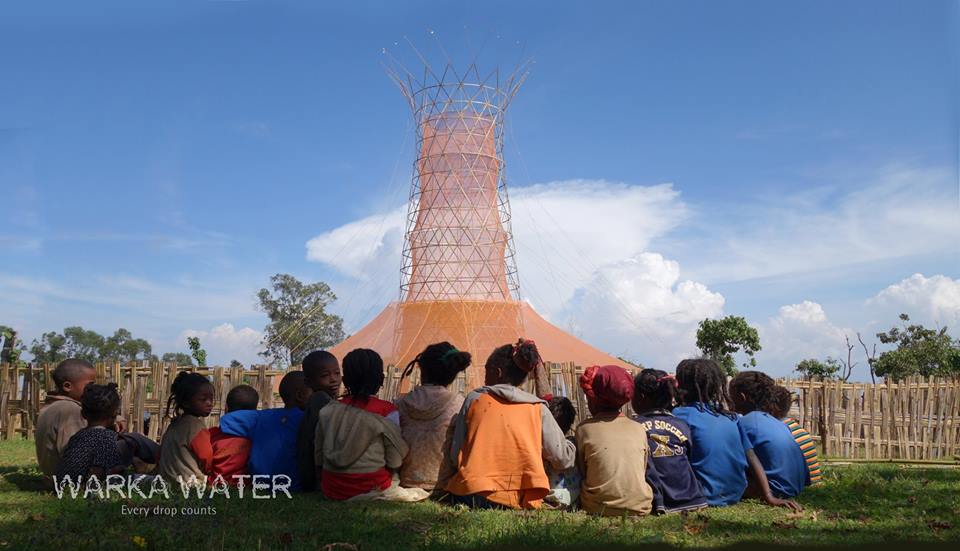
Right now, the first functioning Warka Tower is in place in Ethiopia, but Vittori and the Warka team hope that more of them will be used all over the world. They're constantly tweaking their designs, too, for maximum efficiency.
You can learn more on Warka's website, as well as on Facebook and Flickr, and even donate to the development over on Indiegogo.
And if you love helping people with technology, SHARE this cool creation!

